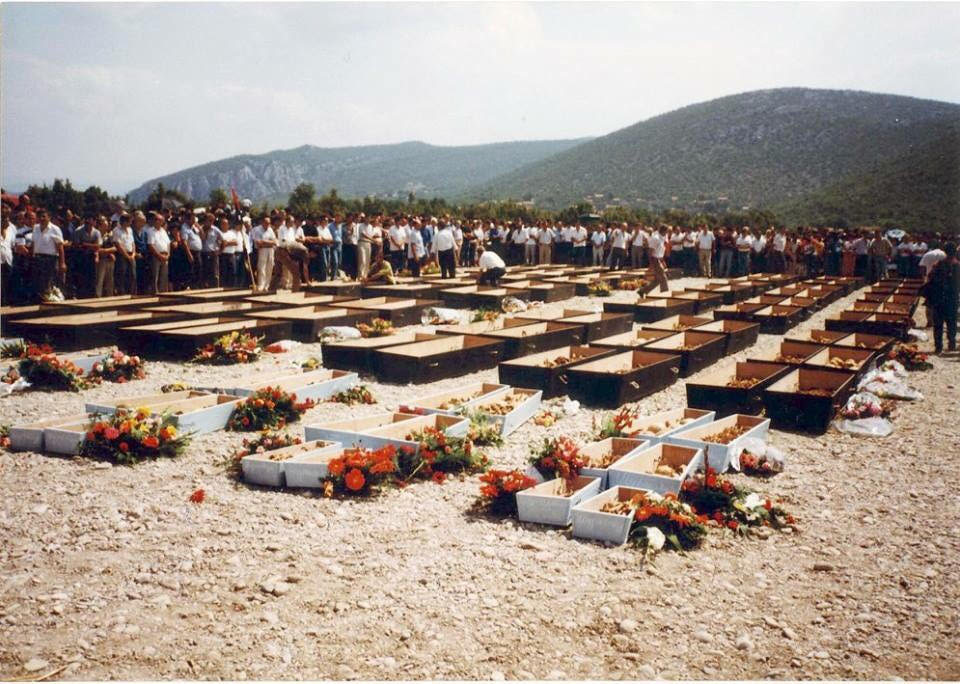A lesson in the history of national suffering, struggle for life and victory over death in the Serbian language can be called – Prebilovci. A village in Herzegovina, which entered the world annals as a place of multiple mass crimes and a symbol of resurrection and victory of life over death.

Written by: R. DRAGOVIC
Prebilovci is also a metaphor for the Serbian people as a whole, which despite unimaginable suffering survived and is still alive today.
Therefore, there is no better place than Prebilovci for the generations of this time to get to know the past and choose their path to the future. In this place, the memory of the genocide in its most terrible form is alive and tangible. The Herzegovinian stone of this village is a testimony of multiple resurrections and a living historical material.
All of these are reasons that the site of the Prebilovci massacre of Serbs must be included in the list of destinations that primary and secondary school students from Serbia will visit on excursions and recreational classes. The initiative to include the places of suffering and crimes against the Serbian people during the Second World War on the map of school trips came from the Genocide Museum, which is currently preparing professional instructions that will be forwarded to the educational authorities.
The museum also proposed locations – memorial centers in Serbia, Croatia, Bosnia and Herzegovina, but also in Austria, Italy, Poland, Germany, Norway and the Netherlands. These are the places where the most serious crimes, mass murders, imprisonment, persecution and murders of Serbs by the Nazis, Ustasha and other occupiers were committed from 1941 to 1945.
– Organized tours of the places of suffering would improve the development of compassion among students towards the victims of war, which goes beyond looking at historical data only, which would contribute to the development of a general culture of remembrance in our society – they emphasize in the Genocide Museum.
On the example of Prebilovci, schoolchildren from Serbia would learn the most difficult and painful, but much needed lesson in national history. This village almost disappeared in the Ustasha massacre – 826 out of a total of 994 Serbs from this village were killed, mostly women, children and the elderly. Most of them were thrown alive into the Golubinka pit, while the rest were killed in their houses and in the fields. 54 Serbian households were completely destroyed in the massacre. The scale of the crime is evidenced by the comparison that before 1941, Prebilovce was inhabited by more than 1,000 inhabitants, while only 170 survived the war. The first recruit from this village was sent to the army only in 1962.

The fate of this place bears the mark of repeating history. Descendants of criminals from 1941 came to Prebilovci again. In the summer of 1992, all the houses in the village were set on fire again, the memorial ossuary with the remains of the victims of the Ustasha massacre was mined, and the place was razed to the ground. After the last war, life returned to this place for the second time. Today, about 40 residents live in it – living witnesses that life is always stronger than death, and that it is better to be a victim than an executioner. The memory of the genocide in Prebilovci is prayerfully cherished in the Church of Christ’s Resurrection, consecrated in 2015.
THE TRUTH HIDDEN IN THE PITS
HIDING is an integral part of any genocide. The communist authorities did not allow the expression of public piety towards the victims of the Prebilovci massacre, and all the pits where the executed Herzegovinian Serbs died were covered with concrete. The truth about the crime came to light in all its force in 1989, when the pits were opened and the descendants met their murdered ancestors again after almost half a century.
Source: NOVOSTI
